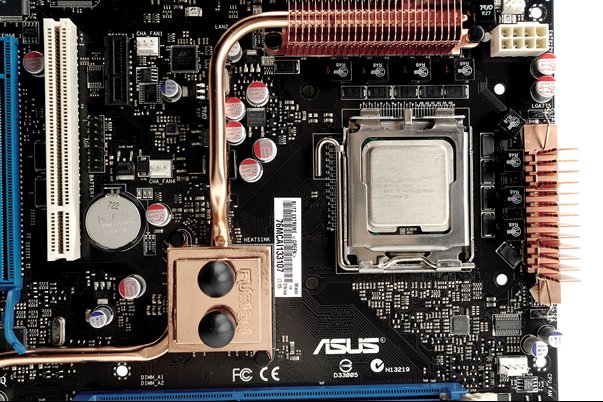Expert advice on chips and chipsets
Nov 30, 2007
We'd like to think that the average PC-oriented gamer reader no longer lives in fear of taking the side off of his or her case, and could at least fit a new graphics card, if not overhaul or buildand tweak their entire system, or troubleshoot a blown memory chip. So let's look at Intel and AMD's coming updates to their processor and chipset lines, go into a few more details, and ponder how our rigs will benefit from the latest and greatest silicon brains out there.
First up: Intel. It's hard to believe that barely 18 months ago, praising the idea of putting an Intel chip into a gaming PC would have marked you out as a slack-jawed loon with a sister for a mother. The Athlon 64 ran cooler, overclocked better, and had greater dual core performance for gaming. Then came Core 2, and it all changed. It used shorter but wider instruction pipelines: more operations are started per clock, and fewer clock ticks are required to finish them. It was designed as a dual core processor from the ground up, and bolting two together introduced the world to the wonders of quad core computing. Overnight it wiped out ten years' worth of favour AMD had built up among gamers.

There have been a few revisions to Core 2 since launch: a couple of months ago new steppings were introduced to support the higher front side bus (FSB) speeds of 1333MHz that the company's new P35 and X38 motherboard chipsets are capable of. Yet these chips have lower power needs than the original Core 2 line-up, and since Intel CPUs derive their clock speed from a multiple of the FSB, they are famed for their excellent overclocking capabilities without the need for monstrous coolers.
Soon, however, there'll be a much bigger revision to the Core 2 line when the first Wolfdale and Yorkfield processors begin to appear. These codenames refer to the dual and quad core variants of Intel's next desktop chips. Key changes to the current microarchitecture include a larger level 2 cache - up to 12Mb for the Yorkfield Extreme Editions compared to a maximum of 8Mb for current quad cores.
More significant is the introduction of Streaming SIMD Extensions 4 (SSE4). This is a new instruction set with 47 new commands geared specifically toward speeding up media applications, including picture editing, movies and, of course, games. It works by streamlining common operations, specifically floating point calculations and memory loads between the CPU and GPU.
Weekly digests, tales from the communities you love, and more


